How to Make Jam Without Sugar (That Actually Tastes Good)
Skip the sweeteners and let the fruit shine. Learn how to make jam without sugar, keep it safe to eat, and enjoy flavor that’s better than traditional jam.
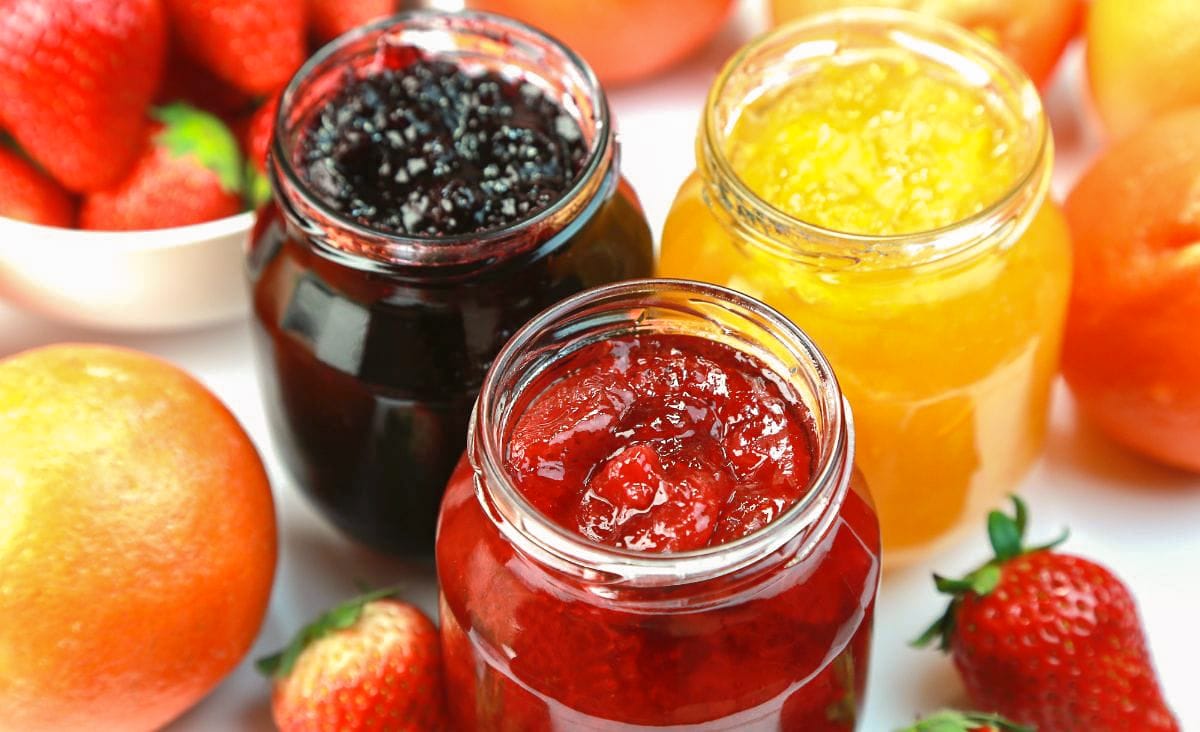
When I first heard about making jam without sugar, I figured it would taste like punishment food. But honestly? It’s simpler than I expected, and now it’s the only way I make it.
This isn’t about low-sugar ‘lite’ recipes. I’m talking real jam, just fruit—no sugar, no honey, no stevia, nothing hiding in the corner. Whether you’re cutting sugar for health reasons or just want to enjoy the pure flavor of ripe fruit, this approach lets the fruit shine.
I’ve tinkered with a lot of batches over the years to figure out what actually works in real life. So if you’re curious about how to safely preserve jam without sugar and still get that thick, spreadable texture, read on. Let’s clear up a few myths, talk about what really works, and I’ll share some of my favorite pairings and storage tricks along the way.
Myth 1: You Need Sugar to Preserve the Fruit
This is the one I hear the most—and it’s just not true. While sugar does help preserve jam and extend its shelf life, it’s not required for safe canning.
How to Preserve Jam Without Sugar
Acidity is what keeps jam shelf-stable, not sugar. That means you can safely can no-sugar jam as long as your recipe maintains the correct acidity. Lemon juice or citric acid is often added to make up for the lack of sugar.
If you’re water bath canning, stick to tested recipes—recipes with Pomona’s Pectin are my go-to, or follow USDA guidelines so you know the acidity is where it needs to be. If you’re new to preserving, this beginner-friendly water bath canning guide will walk you through everything from sterilizing jars to processing times.
Tips for Safe Sugar-Free Jam Canning:
- Use recipes from trusted sources—don’t guess
- Add bottled lemon juice or citric acid where recommended
- Follow the correct processing times for no-sugar jam
And if you’re unsure? Freeze it instead. It’ll be just as delicious.
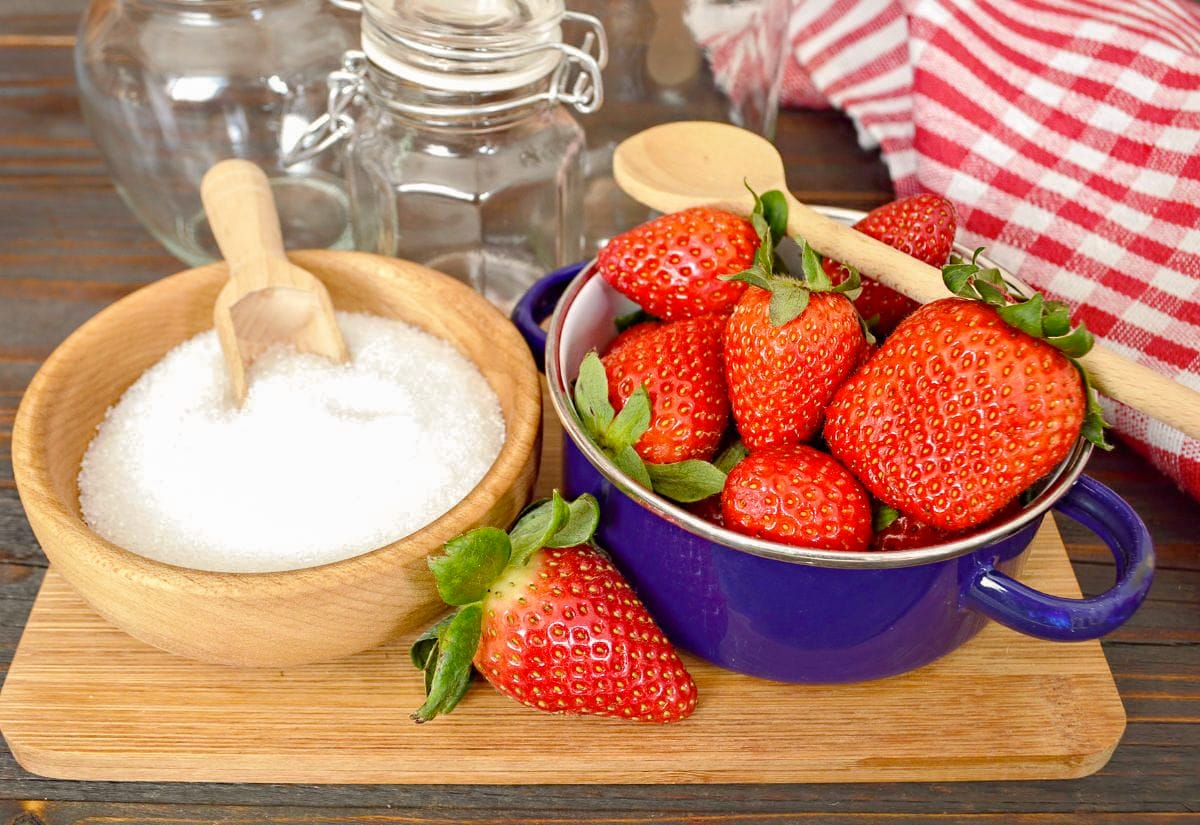
Myth 2: Jam Won’t Gel Without Sugar or Sweeteners
It’s true that sugar helps traditional jams set—but it’s far from the only way.
Gelling Without Sugar
You have a few options here:
- Pomona’s Pectin – This low-methoxyl pectin is calcium-activated, meaning it doesn’t rely on sugar to gel. It’s my favorite choice for no-sugar jam and works beautifully with just fruit and lemon juice.
- High-Pectin Fruits – Apples, blackberries, plums, and citrus contain enough natural pectin to gel on their own with longer cooking. If you’re using lower-pectin fruits like strawberries or peaches, try mixing in a grated apple or adding lemon peel.
- Long, Slow Cooking – As fruit simmers, water evaporates and the natural sugars and fibers concentrate. Give it time, and a lot of fruits will naturally cook down into a soft-set jam without adding a thing.
Pro tip: Stir frequently near the end to prevent scorching and test doneness by spooning a small amount onto a chilled plate. If it holds its shape, it’s ready.
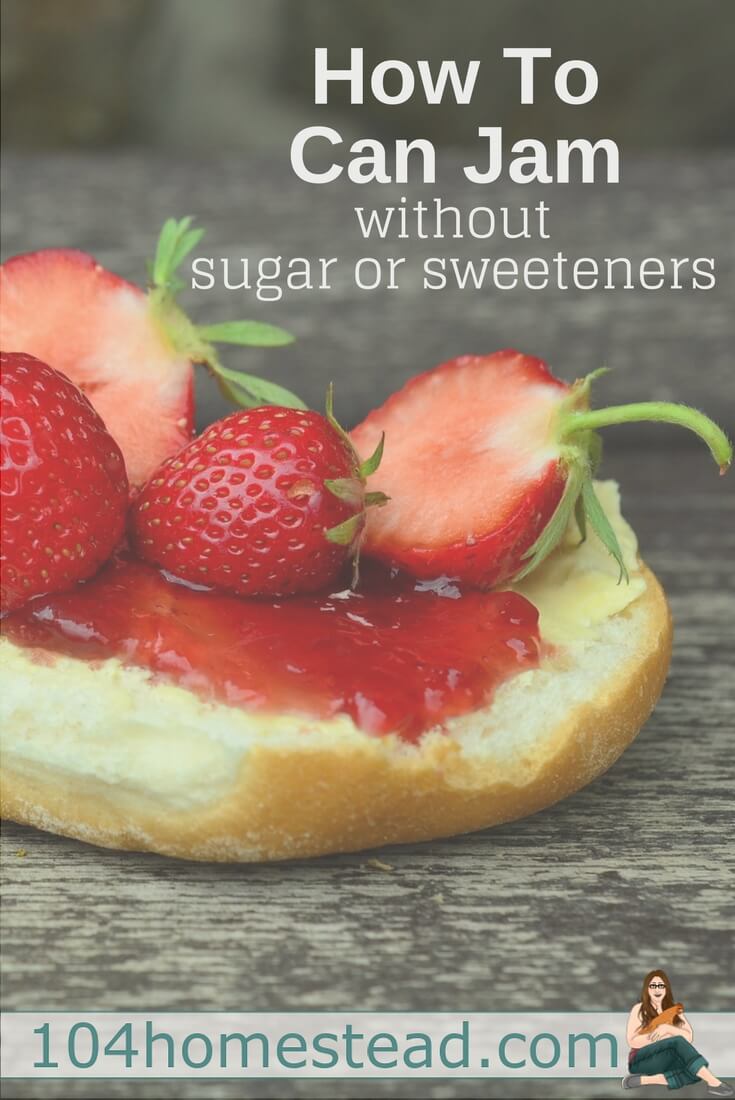
Myth 3: Jam Without Sugar Looks Dull and Brown
I hear this one a lot—that without sugar your jam will turn dull and brown. Truth is, it doesn’t have to look like a science experiment gone wrong.
How to Keep That Vibrant Color
Without sugar to “set the color,” fruit can darken during cooking—but with a few smart techniques, you’ll still end up with beautiful jars.
- Pick fruit that’s ripe but not mushy
- Add a splash of lemon juice to keep the color bright
- Once it’s thickened, pull it off the heat—don’t keep boiling it to death
- Store it in a cool, dark place after canning
And honestly? Even if it’s a little darker than traditional jam, it still tastes incredible—and that’s what really matters.
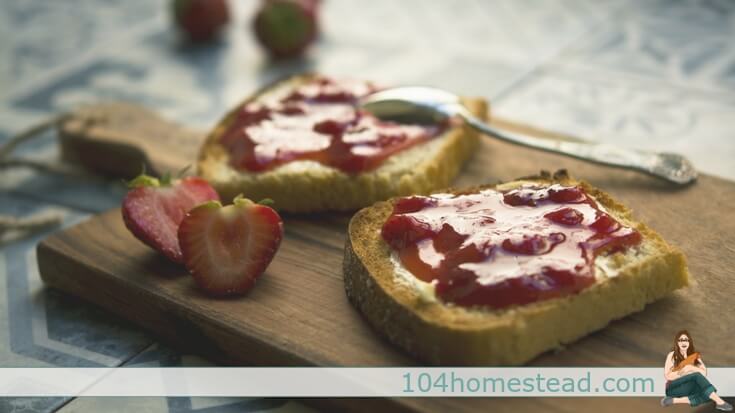
Which Fruits Work Best for Jam Without Sugar?
Some fruits just do better than others without sugar, but if you catch them at peak ripeness, you’ve got plenty of options.
Fruits like apples, blackberries, plums, apricots, and raspberries have either natural pectin or a strong enough flavor to hold their own without added sweetness. Strawberries, blueberries, and peaches can also work, especially if you pair them with lemon or apple to boost pectin.
I’ve had great success with mixed fruit jams, too. Combining something tart (like rhubarb or gooseberries) with something sweet (like apple or peach) gives you a balanced flavor and better texture.
Flavor Pairings to Try
If you want to keep things interesting, try one of these combinations:
- Blackberry + Apple
- Plum + Raspberry
- Peach + Ginger
- Blueberry + Lemon Zest
- Strawberry + Rhubarb
- Apricot + Orange
I always recommend starting small the first time—you can taste, tweak, and decide if it’s worth making a bigger batch next round.
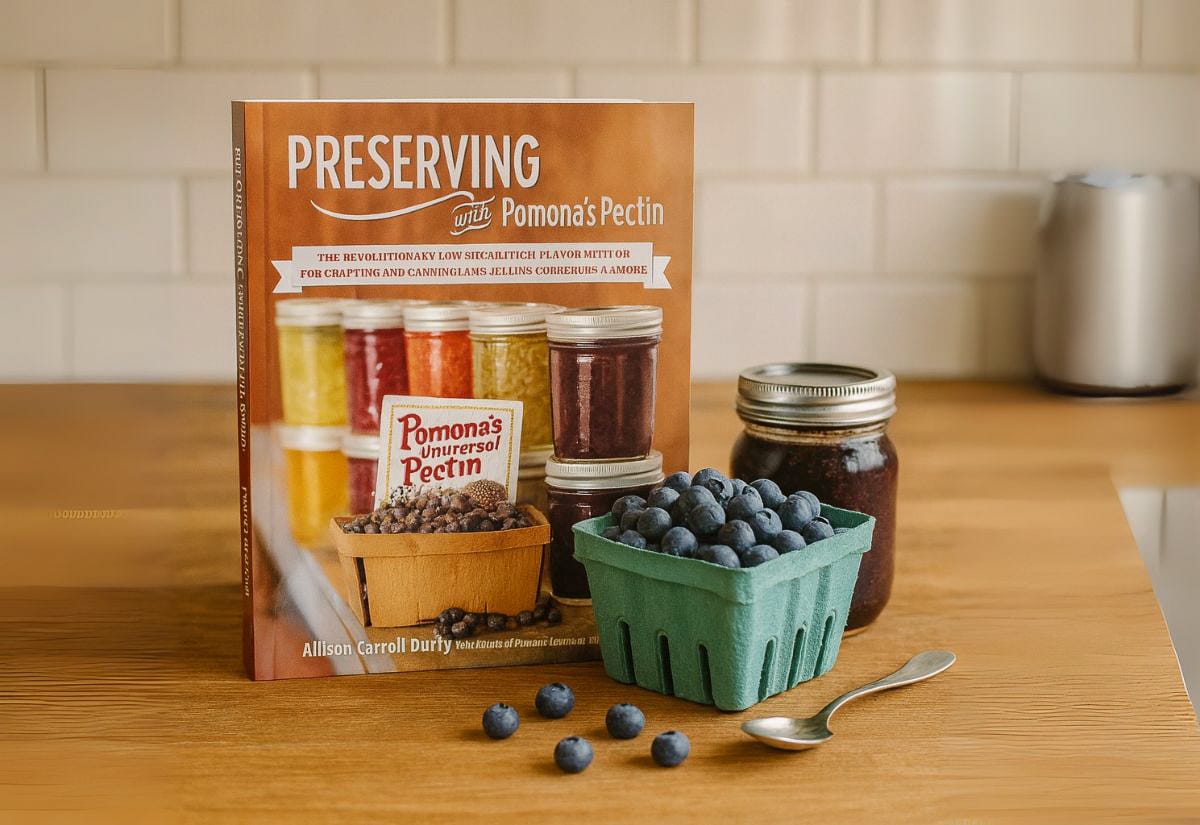
For more inspiration, check out the book Preserving with Pomona’s Pectin, which includes a variety of sugar-free and low-sugar recipes.
How to Store Jam Without Sugar
Without sugar, you’ll want to be a little more careful about storage, but honestly, it’s nothing tricky.
Fridge Storage
Refrigerate after opening and use within 1–2 weeks. Sealed jars stored in the fridge can last up to 2 months.
Freezer Storage
Spoon into clean jars or freezer-safe containers, leaving space at the top for expansion. Jam will keep in the freezer for 4–6 months.
Water Bath Canning
Only attempt canning if you’re using a tested no-sugar recipe with added acid. Always follow the instructions from your pectin brand or a trusted canning resource.
If you’re unsure about safety, skip the canning and freeze it.
How to Use Sugar-Free Jam
Because this jam isn’t overly sweet, it’s surprisingly versatile.
Spread it on toast or biscuits, yes—but also try:
- Swirling it into yogurt or oatmeal
- Layering it into thumbprint cookies or bars
- Adding a spoonful to marinades or dressings
- Serving it with cheese and crackers
- Stirring it into sparkling water or iced tea for a hint of flavor
You’ll start finding excuses to pull it out of the fridge.
Answers to Your Sugar-Free Jam Questions
If you’re new to making jam without sugar, these are some of the most common questions people ask—let’s clear them up.
Pin this for your next canning season—your fruit will thank you.
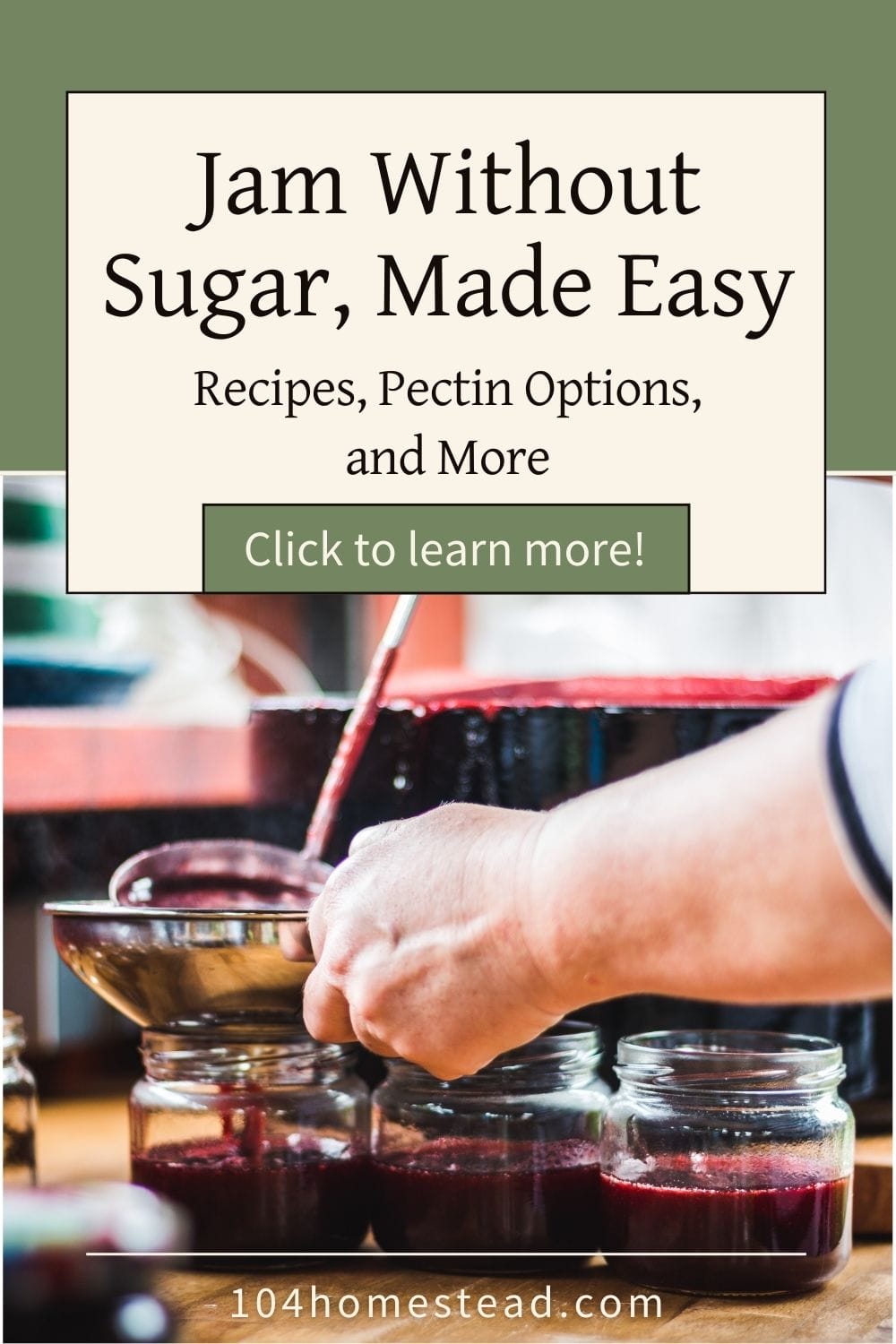
Once I gave sugar-free jam a real shot, I was hooked. The flavor is brighter, the fruit tastes like fruit, and I don’t feel like I’m sneaking dessert every time I spread it on toast.
If you’re curious, give it a try. Start with a small batch. Keep it simple. And let the fruit do the talking. Not quite ready to go sugar-free? This classic mixed berry jam recipe is a delicious place to start.





I am trying to can persimmon jam, beautyberry jam, and mango jam without added sugar. I am diabetic and every carb makes my glucose elevate or skyrocket. Any recommendations? Thanks!
Extremely inspired to read about homestead. I have been trying to understand packaging of sugar free jams , using natural preservatives like lemon . If I want to start a small business in preparing and selling these spreads need to know more about packaging. would love to have a conversation.
I am looking to make an apricot jalapeño or mango jalapeño jam.
Don’t even know if one can make mango jam, but am willing to head anyone’s attempts and successes.
Please comment or leave reply. Thank you
I noticed on your strawberry jam you said it would keep for 2 mths in the fridge. Have you ever frozen it in jars/containers? I have quite a few strawberries to do and was hoping to freeze some. Would this work?
Do you know of any recipes that are savory and do not use any kind of sugar? The ones that use peppers for instance? I’m not looking for a sweet spread. I don’t want use any kind of artificial sweeteners. I would be happy to experiments based on a lose recipe and share my findings.
Do you have a recipe for sugar-free apple jelly? Thank you.
These are exactly what i was looking for! Do you have a sugar free blueberry jam recipe?
I have been making grape jam without sugar and pectin. I have been cooking it until it turns to “jam”.
I haven’t been able to find a recipe for grape jam without sugar that I can preserve in a water bath canner.
I understand by your article that the jam needs citric acid or lemon juice added now order to safely preserve it. Can you offer any advice on this or a recipe?
I don’t feel confident giving out canning advice (though I throw caution to the wind when I’m doing my own canning lol). Have you checked out your local cooperative extension? Those people are a great resource.
“All fruits can safely be canned or frozen without sugar.”, http://extension.colostate.edu/topic-areas/nutrition-food-safety-health/food-preservation-without-sugar-or-salt-9-302/
Just got here but really enjoying your website. Thank you so-o-o-o muck.